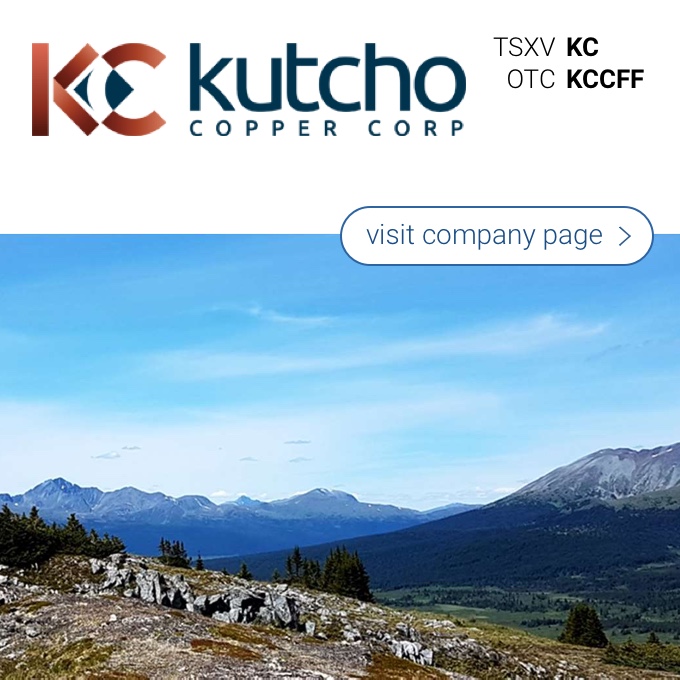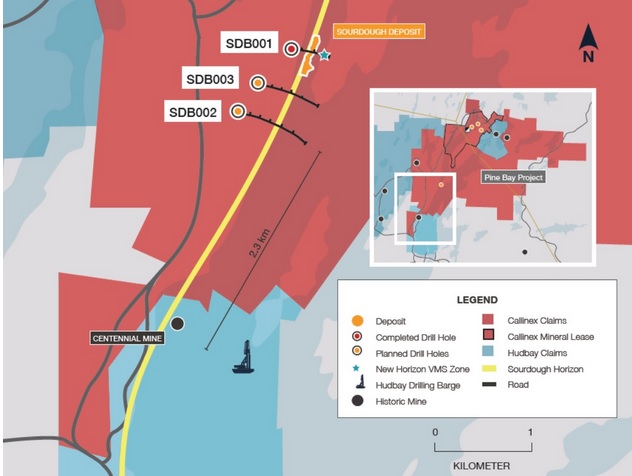We have been following Golden Arrow Resources for quite a while now, and as the company has released some remarkable exploration updates with new drill results, it’s time for an update. We will discuss the importance of these new drill results for the project and company.
[margin20]
[download_link link=”http://caesarsreport.com/freereports/CaesarsReport_2014-06-19.pdf” variation=”blue”]DOWNLOAD REPORT [800kB][/download_link]
[margin40]
[fancy_header3]TEXT VERSION[/fancy_header3]
[margin10]
Chinchillas keeps on growing
We had high expectations of this year’s drill program at the Chinchillas project as VP Exploration Brian McEwan wanted to conduct some step-out drilling to drill-test new zones for mineralization.
Back in the spring of last year we were quite happy to see a maiden resource estimate containing 80 million ounces of silver and close to 800 million pounds of zinc and lead, as the total estimate of 105 million silver-equivalent ounces was much higher than what we were anticipating at that time. Golden Arrow didn’t waste any time and immediately moved ahead with Chinchillas and completed a Preliminary Economic Assessment which was focusing on an owner-operated mine which would produce a zinc concentrate and a lead concentrate (which would contain the silver). This PEA was completed in December of last year and filed on SEDAR earlier this year.
There were no big surprises in the PEA which estimated the initial capital expenditures for a 6,000 tpd operation at $202M, which included a 25% contingency. This means Golden Arrow’s PEA very likely is a conservative PEA as most other companies use a contingency of just 8-15%. This means that if the initial capital expenditures would come in under budget at, say $170M, the after-tax NPV8% of the Chinchillas project would immediately increase by $32M (assuming no discount rate in the first year of operations is being applied). So whilst the NPV8% of $98M and an IRR of just 17% using a silver price of $22/oz indeed doesn’t sound extremely exciting at first sight, we think the economics of the Chinchillas project might be enhanced by fine-tuning some of the inputs.
Golden Arrow Resources has committed to drill 25,000 meters in a Phase III drill program which was designed to both expand and upgrade the resource estimate at Chinchillas. Whereas just 6,000 meters (in a planned 53 holes) were planned to target new mineralized zones, recent exploration success has caused Golden Arrow to increase the expansion drill program to 9,000 meters (+50%). In the year between finishing the Phase II drill program and starting Phase III, Golden Arrow’s team on the ground has done an excellent job to map and sample large zones of the Chinchillas project, and a more detailed geophysics program has identified several interesting targets which might host more mineralized zones. And VP Exploration Brian McEwan was right. The expansion program started by intersecting 54 meters of 290g/t silver and 2.3% lead-zinc which was an extremely exciting intercept as the hole was drilled at the border of the mineralized zone which was known at that moment. It meant that the Silver Mantos zone of the project seemed to continue to trend west, and the grades were actually improving which obviously bodes well for a resource update.
The geophysics program in the down-season proved to be extremely important for Golden Arrow, as in the next batch of drill results more mineralization was discovered. This is effectively the case for the newly-discovered Pascua zone, where a large geophysical anomaly was detected, even though there was no detectable surface expression. After discovering this zone, Golden Arrow plans to drill two more holes which means the originally budgeted 6,000 meters of expansion drilling have now been increased to 9,000 meters of drilling. This is important to emphasize, as expansion drilling always is an ‘unsure thing’ and could be quite disappointing. But in Golden Arrow’s case, it has validated the potential of the Chinchillas project which seems to become a project with world class potential and very similar to the San Cristobal mine in Bolivia which has an average grade of 53g/t silver and 1.9% ZnPb. The more holes that are being drilled at Chinchillas, the more similarities we see with San Cristobal, but obviously a lot more confirmation drilling will be needed, but the potential definitely is there and the preliminary signs are very encouraging.
Where to go from here?
2014 will be an important year for Golden Arrow as it plans to drill much more holes to confirm the potential of the Chinchillas silver project. The first results of the 2014 season indicate the project could contain more zinc than we anticipated, which isn’t necessarily a bad thing as we are quite bullish on the prospects for zinc by the time a construction decision will have to be made. The recovery rate for the zinc (66-96%) is lower than for the silver and lead, but we remain confident the zinc credit could be an important thing for the Chinchillas project. Based on the preliminary drill results we are expecting a substantial resource increase to at least 150 million silver-equivalent ounces (which would be a 45% increase compared to the currently known resource estimate).
This would obviously have a positive impact on NPV of the project, and we estimate a mine life extension by 5 years at a silver price of $22/oz could easily add another $30-35M to the after-tax NPV8% of Chinchillas given the fact the average cash cost per ounce of silver after deducting by-product credits is just $6.50/oz over the mine life.
But that’s not all. Should the Chinchillas project prove to contain in excess of 200 million silver-equivalent ounces, we would be very interested to see an economic study based on a modular expansion from 4-6,000 tonnes per day (whereby the company would focus on the higher grade ore in the first few years of the mine life) to 10-15,000 tonnes per day later in the mine life to benefit from economies of scale.
Conclusion
The results of the Phase III exploration program have impressed us, and Chinchillas could be larger than we anticipated before. More drilling will be needed and will be conducted, but we are very encouraged by the results of the first few batches of the Phase III program. The more holes Brian McEwan and his team are drilling, the more intriguing the Chinchillas project gets, and there’s no reason why this project couldn’t be a second San Cristobal.
[divider_top]
Disclosure: Metanor Resources Inc. is a sponsoring company. Please see our disclaimer for current positions.













